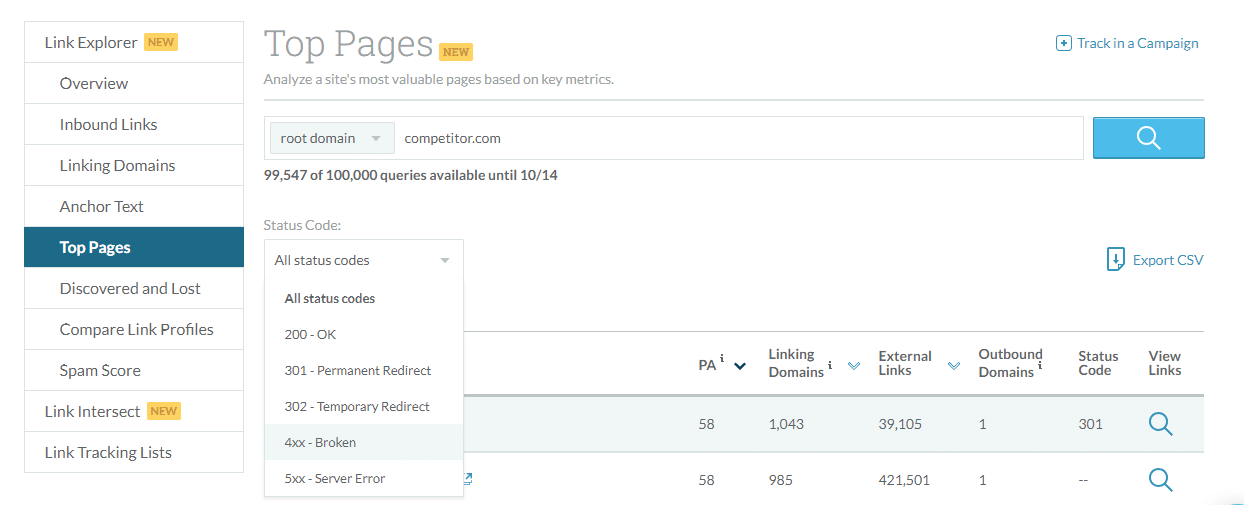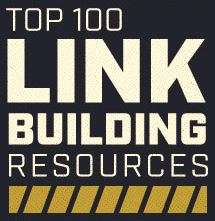Broken link building involves finding broken links and reaching out to webmasters with a resource that you’ve created to replace the link. It can be an effective tool in your link building arsenal, after all, you’re helping the webmaster/company while still acquiring a link directing to your (or client’s) website.
If you ask any of my coworkers, they will tell you that broken link building is my favorite link building technique. But what is it? How do you use it effectively? Keep reading to find out.
Starting a Broken Link Building Strategy
We’re sure you’re thinking to yourself, “Yea that all sounds good, but where do I start?” Well, here are three phases to broken link building I will walk you through; the content phase, the research phase and the outreach phase.
Phase One: Content
First, and most important, you need quality content. Without it, you are going to have a really hard time placing links with any strategy. We suggest creating content that offers the most value to the targeted audience. As we’ve said over and over, quality content not only benefits users, it can make link building much easier.
Broken #linkbuilding is an effective strategy because it allows marketers to start a relationship with a #webmaster by helping them, first.
Find a topic in your industry that’s been historically popular within resource backs and other curated pieces of content. Then, build a strong piece of in-depth content that you can leverage without the aid of a broken link. Why? Because it can give the piece of content more chance to succeed after broken link opportunities start drying up.
Phase Two: Research
There are a couple ways to find broken links. The first, broader approach, involves looking for broken links across any domain. I usually start by using advanced search commands such as:
“example of resource” inurl:resources
From there, I use a chrome extension (LinkMiner) to identify broken links on a page. I’ll look for resource banks where my piece of content might be a good fit, while hitting the link miner extension until… BAM…broken link.
The benefit of LinkMiner (over other broken link extensions) is the ability to sync to your Majestic or Ahrefs account get a better feel for how big of a broken link jackpot each link contains.
Pro tip: If you uncover a site that has more than 30% broken links, pass on the opportunity. That page is most likely not maintained anymore, and not worth the effort of reaching out. You can bookmark these broken links for additional opportunities and really go down the rabbit hole later.
Another way to find broken pages is using the new link explorer tool from Moz. It’s helpful if you’re targeting the broken backlinks of a competitor or a site that has a broad spectrum of content that you may already have a piece of content to match.
Put your competitor’s URL into Moz’s Link Explorer and click on the top pages in the results. Select “4xx- Broken” in the dropdown and behold, broken pages.
List the pages from most-to-least referring domains and start looking for relevant pages to your own content. If you find a relevant piece of content, put that URL into multiple backlink databases because each site might have picked up backlinks that others have not.
Are you building links for your own organization? Throw your URL into Link Explorer to discover any unknown broken pages on your own website. If you find any, reach out to the webmasters of these pages or redirect that page to a relevant one on your site. Google does not pass link authority to 404 pages so tidying up these broken links has always been considered easy, quick wins.
Find an opportunity with #LinkMiner? Put that resource’s broken URL into @ahrefs or @Majestic and find additional opportunities.
Phase Three: Outreach
When reaching out to webmasters, there are two different strategies you can use when notifying them of the broken links. The first outreach strategy is what I call “The Replacement Strategy”. With it, you’re notifying the webmaster that there is a broken link on their site and you have a resource that would be relevant and valuable enough to take its place. It looks something like this:
Good Morning,
I hope your Friday is going well. My name is Ted, and I’m reaching out on behalf of my client’s company.
Today, I came across the helpful page of the website, located below:
www.url.edu
I found the page to be an impressive compilation of resources for those researching your resource strategies. I wanted to let you know that the resource titled “Broken Link Anchor Text” is leading your visitors to a broken page.
If you are looking for a comparable resource to replace it, I would suggest my site’s resource titled “Resource Title”. Short description of the resource
Below is the URL to the resume-writing resource:
https://ift.tt/2OEA0fT
Would you be open to sharing this additional resource on the web page?
Thank you for your consideration. Please let me know if you have any questions or need additional information. I look forward to hearing from you soon!
Kind Regards,
Ted
The other strategy is notifying the webmaster of the broken page and informing them the page moved to a new location. Then, let the webmaster know you have a piece of content that would work well instead. (See how important quality content is for link building?)
This strategy comes off less predatory and more helpful. This works well when you find a broken link in a related field as your content, but is not a direct replacement. An example outreach for this strategy would look something look very similar to the example above but adjusted a bit to fit your pitch.
…I found the page to be an impressive compilation of resources for those researching your resource strategies. I wanted to let you know that the resource titled “Broken Link” is no longer being supported but has since moved to this location “Working Link”.
I also wanted to reach out to see if you would be open to sharing an additional resource with your community titled “Our Really Cool Resource” published by Our Website. Short description of the resource…
With all link building outreach, the most important things you can do is follow up. I acquire roughly 10% of my links by sending a quick follow up about 7 to 14 days after my initial email. Our team doesn’t let these golden opportunities go to waste because of a busy inbox.
In Summary…
Broken link building is an effective strategy because it allows marketers to start a relationship with a webmaster by helping them, first. The webmaster might not always swap out the broken link for your working link, but they are more likely to open your emails and respond more frequently – and when rejection, avoidance or no response is part of the job – that communication is a win.
Top 100+ Link Building Resources
Ready to immerse yourself in the world of link building? Here are over 100 links to the best resources on link building training, blogs, tools, and more. The compiled toolkit of resources will provide further insight into industry leaders, tools, tactics, best practices and case studies.
The post What is Broken Link Building? appeared first on Vertical Measures.
source https://www.verticalmeasures.com/blog/link-building/what-is-broken-link-building/
source https://derekpackard.com/what-is-broken-link-building/






No comments:
Post a Comment